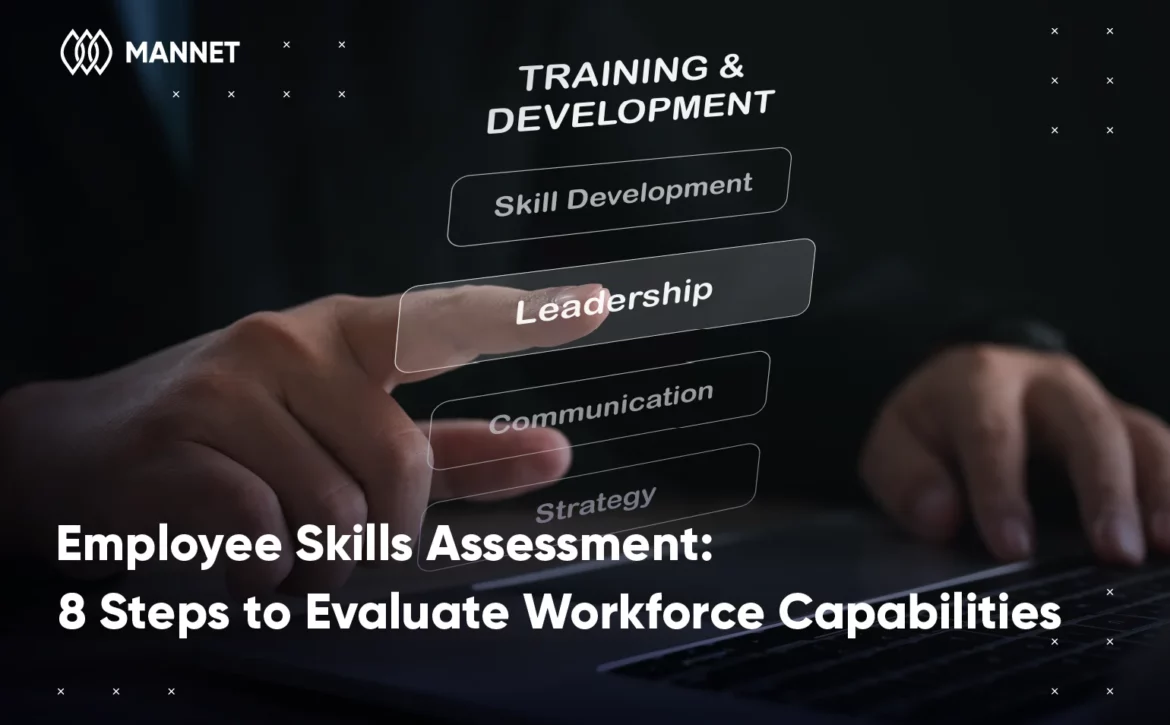A recruitment funnel offers valuable insights into each stage of the hiring process, helping businesses pinpoint exactly where and how to adjust efforts to attract top-tier candidates. When managed effectively, it can streamline what is often a time-consuming process, making recruitment more efficient for an organization.
In this article, we’ll explore what a recruitment funnel is, break down its core stages, and explain why it is crucial for businesses. By understanding the full funnel and key metrics, companies will uncover actionable strategies to improve their hiring process and attract the best talent.
Let’s get started.
What is The Recruitment Funnel?
A recruitment funnel is a structured model that maps out the stages candidates go through in the hiring process. Just like a sales funnel, the recruitment funnel is designed to attract a broad pool of potential candidates at the top and narrow them down as they move through each stage of the process.
At its core, the recruitment funnel enables organizations to manage their hiring process more effectively, so that only the best candidates make it through to the final selection phase.
The funnel metaphor comes into play because, much like how a traditional funnel works by filtering liquids into a smaller opening, the recruitment funnel filters candidates through various stages, from awareness to hiring. By understanding and optimizing each stage, companies can improve the quality of their hires, shorten hiring cycles, and boost overall recruitment efficiency.
Why is A Recruiment Funnel Important?
The recruitment funnel is important because it provides a clear, systematic approach to the hiring process. By structuring the hiring journey into distinct phases, HR teams can better manage candidate flows, identify bottlenecks, and refine their strategies to improve candidate quality and recruitment speed.
A well-defined funnel also allows companies to assess recruitment effectiveness using specific metrics, such as time-to-hire or conversion rates, helping them fine-tune their methods to attract and hire top talent more efficiently.
In the fast-paced world of recruitment, the hiring funnel empowers organizations to make data-driven, evidence-based decisions. Because every stage in the funnel captures quantifiable information, like from application numbers, assessment scores or interview feedback, recruiters can analyze real data instead of relying on instinct.
Additionally, the recruitment funnel contributes to a more transparent and unbiased recruitment process, reducing potential hiring biases and making sure all candidates are evaluated consistently.
The 6 Core Recruitment Funnel Stages
The recruitment funnel is typically divided into six key stages, each representing a milestone in the candidate’s journey. Let’s look at each stage more closely.
Awareness
At the top of the funnel, the focus is on increasing visibility among potential candidates. Many individuals at this stage may not yet be aware of the company or its job opportunities. Strong employer branding, job advertisements, social media content, and employee referral programs play a central role in expanding reach and generating initial interest.
Recruiters and hiring managers focus on building brand awareness by communicating the company’s values, work culture, and the benefits of working for the organization. They may also target passive candidates who are not actively seeking jobs but might consider new opportunities if the right position is offered.
What recruiters can do:
- Conduct an audit of the employer brand across digital platforms.
- Launch targeted awareness campaigns showcasing company culture.
- Select sourcing channels aligned with the organization’s hiring needs.
Attraction
After generating awareness, the next objective is to build interest. This stage centers on positioning the organization as a desirable place to work by communicating its vision, values, culture, and employee value proposition. A compelling narrative helps convert interest into intent to apply.
What recruiters can do:
- Develop clear, engaging job descriptions that accurately reflect the role and culture.
- Apply programmatic advertising to reach targeted audiences.
- Encourage internal referral programs to extend reach.
- Involve hiring managers in direct candidate engagement.
Applying
The applying stage begins when candidates submit their applications, resumes, or other required materials. Here, candidates usually upload their resumes, fill out applications, or respond to specific questions related to the role.
However, research indicates that the average completion rate for online job applications is only 10.6%, often due to lengthy or complex forms. A simplified, transparent process significantly improves conversion and enhances the candidate experience. So, building a good candidate experience is critical at this stage.
What recruiters can do:
- Simplify the application process and ensure mobile compatibility.
- Maintain clear, proactive communication regarding timelines.
- Automate personalized confirmation emails to acknowledge submissions.
Evaluating
Once applications are received, the evaluation phase begins. Recruiters assess qualifications, experience, and cultural alignment through resumes, tests, or pre-screening interviews. As this stage often involves a large number of applicants, structured assessments and automation tools can help maintain speed and fairness.
What recruiters can do:
- Implement pre-screening or skill-based testing for employee skills assessment (both technical and soft skills).
- Use data-driven scoring systems to ensure objective evaluation.
- Shortlist candidates who meet predefined criteria for interviews.
Interviewing
Candidates who make it to this stage are typically shortlisted based on their qualifications and how well they performed during the evaluation phase. The interviewing stage provides an opportunity to explore candidates’ abilities, motivations, and alignment with organizational goals.
Small businesses spend an average of 7 hours per week on interviews. While multiple rounds may be necessary for senior or technical roles, excessive interviews can cause candidate fatigue or drop-offs.
At this point, it’s important that both the employer and candidate assess whether they align in terms of values, expectations, and long-term goals.
What recruiters can do:
- Prepare candidates by clearly outlining interview formats and expectations.
- Structure interviews around defined competencies.
- Provide prompt and constructive feedback after each round.
Hiring
Now businesses are at the end of the recruitment funnel, ready to extend a formal offer to the most suitable candidate. However, this stage often involves heightened competition, as top candidates typically consider multiple offers simultaneously.
Once the candidate accepts the offer, the hiring process is complete, and the candidate transitions into onboarding. The quality of this final decision is crucial, as it reflects the effectiveness of the entire funnel and how well each stage has been managed.
What recruiters can do:
- Present a total value proposition that extends beyond compensation.
- Reinforce the company’s mission and culture through authentic storytelling.
- Emphasize opportunities for career growth, mentorship, and skill development.
4 Recruitment Funnel Metrics
To measure the success of the recruitment funnel, it’s essential to track certain key metrics. These metrics will help organizations understand how efficient and effective each stage of the funnel is. Here are four important funnel metrics companies should be tracking.
Time to hire & Conversions
Time to hire measures how long it takes from the moment a candidate enters the pipeline until they accept the offer. A long hiring cycle often indicates something is slowing the process, perhaps too many interview rounds, unclear communication, or delays in decision-making.
In parallel, conversion rates show how effectively candidates move from one stage to the next. For example, if many candidates apply but very few make it to interviews, the issue could lie in the job postings.
Cost per hire
This metric represents the total cost associated with bringing a new employee on board. Beyond being a financial figure, it also serves as an important indicator of recruitment efficiency. Monitoring this figure gives organizations a clear benchmark to evaluate spending and identify areas for cost optimization.
Source of hire
The source of hire metric reveals which channels deliver the most effective candidates: job boards, social media, employee referrals, or external recruitment services.
When analyzed properly, this data helps HR teams make smarter budget decisions. If referrals or LinkedIn campaigns are generating high-quality hires, companies can channel more investment into those sources instead of less effective ones. Over time, this yields stronger results with less wasted effort.
Quality of hire
While speed and cost matter, the ultimate goal is to hire people who perform well and stay. Quality of hire measures how effective the recruitment funnel is at identifying candidates who truly fit the organization.
This can be evaluated through new hire performance reviews, retention rates, and manager feedback within the first 6 to 12 months. A consistently high quality of hire signals that the recruitment funnel is working well.
Learn more: Top 5 Hiring Metrics That Matter and How to Measure Them
FAQs About Recruitment Funnel
- How is the recruitment funnel calculated?
The recruitment funnel is measured by tracking how many candidates move from one stage to the next. This is typically expressed as a conversion rate for each phase.
For example: If 500 candidates apply and 50 are shortlisted, the conversion rate from application to shortlist is 10%.
Analyzing these rates helps businesses see where strong candidates drop off and which stages need improvement.
- What tools can assist in managing the recruitment funnel?
Various digital tools can help organizations streamline and monitor their recruitment funnel:
- Applicant Tracking Systems such as Greenhouse, Lever, or Workable help automate job postings, resume screening, and candidate tracking.
- Recruitment analytics platforms like SmartRecruiters or Recruitee provide detailed data on conversion rates and hiring efficiency.
- Assessment tools such as Codility or TestGorilla help evaluate candidates objectively during the screening stage.
Together, these tools centralize recruitment data, reduce manual work, and support data-driven decision-making.
- What factors can affect your recruitment funnel?
Several factors can influence the performance of a recruitment funnel, including:
- Job descriptions: Overly complex or unclear descriptions can discourage qualified candidates from applying.
- Application process: Lengthy or confusing application forms often lead to high drop-off rates.
- Candidate experience: Poor communication or delays during interviews can negatively impact engagement.
- Employer branding: Weak brand perception makes it harder to attract top talent, especially in competitive markets.
Regularly reviewing funnel metrics and candidate feedback helps organizations identify these issues early and maintain a healthy, efficient recruitment pipeline.
A Summary of Recruitment Funnel
The most effective recruiters closely monitor every stage of their recruitment funnel. When understanding the goals of each phase and leveraging technology to track and analyze metrics, HR teams can continuously refine their hiring strategies and achieve better results.
When this becomes challenging, ManNet offers practical support through our recruitment services. Instead of sorting through endless resumes, companies can leverage our expertise to assess candidates based on actual skills and performance indicators.
To learn how ManNet can help strengthen your recruitment process and turn data into meaningful hiring outcomes, get in touch with our team today.


